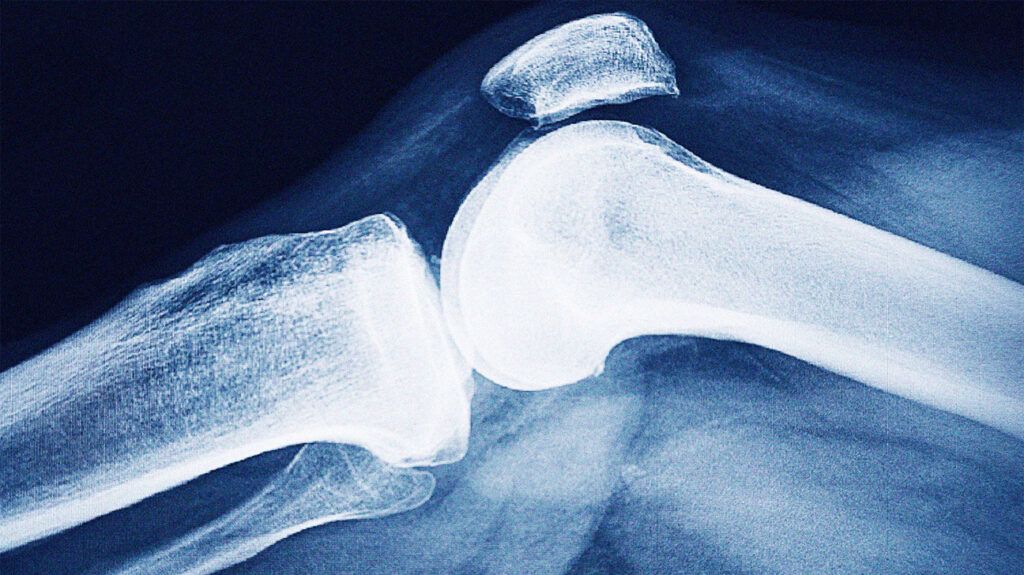Screening for osteoporosis can show if a person has low bone mass and can potentially develop osteoporosis. Doctors typically perform a dual-energy X-ray absorptiometry (DEXA) scan to detect if bones are weaker than usual.
Osteoporosis is a health condition that makes bones more fragile and likely to break. It develops slowly over the years. Many people with osteoporosis have it without knowing and only receive a diagnosis when they break a bone after an injury.
Attending regular screening tests can help detect osteoporosis in its early stages. Screening also allows people to make appropriate lifestyle changes and start treatment to slow bone deterioration.
This article will review the benefits and risks of screening tests for osteoporosis, including when people should undergo screening, what it involves, and the next steps following the results.
A note about sex and gender
Sex and gender exist on spectrums. This article will use the terms “male,” “female,” or both to refer to sex assigned at birth. Click here to learn more.

Osteoporosis is
Doctors typically recommend undergoing screening for females aged 65 years or older and for females aged between 50 and 64 years old with certain risk factors, such as:
- a previous fracture
- a family history of osteoporosis
- having early menopause
- having had a hysterectomy or surgery to remove the uterus
- taking certain medications
- smoking
- low body mass
- nutrition issues and deficiencies
- having other medical conditions, such as:
Learn more about osteoporosis.
Many people receive a diagnosis of osteoporosis only after they break a bone. Undergoing screening for osteoporosis
While there are treatments for osteoporosis, bone damage is often irreversible. Screening can allow people to take steps to slow bone loss and prevent premature bone weakening, reducing the risk of injuries and fractures.
These screening tests are noninvasive and painless, lasting only
Screening for osteoporosis is safe. However, during the scan, people receive exposure to a small dose of radiation from the scanning device. This radiation is necessary to evaluate bone density.
Treating osteoporosis can also pose risks.
In some cases, bisphosphonates present in therapies may cause cardiovascular and gastrointestinal adverse effects. However, the risk of these events is small.
Screening usually begins with a physical examination, taking a medical history, and a discussion about lifestyle habits, including diet, exercise, and smoking history. Doctors can also use a Fracture Risk Assessment Tool to estimate a person’s future fracture risk.
Depending on a person’s fracture risk, the specialist may recommend having a DEXA scan to assess their bone mineral density (BMD). This is a safe, painless test that lasts several minutes and can help doctors understand how likely someone is to develop osteoporosis in the future.
The DEXA scan will provide a bone density report called a T score. This figure represents how much a person’s bone mass differs from the bone mass of an average healthy adult.
The following table will explain the results of a DEXA scan based on the T-score:
| Hip BMD T-score | Diagnosis |
|---|---|
| -1 or higher | typical |
| between -1 and -2.5 | low bone mass, or osteopenia |
| -2.5 or lower | osteoporosis |
| -2.5 or lower with the presence of a fracture due to bone fragility | severe osteoporosis |
If the test results show a person has osteopenia or osteoporosis, this does not necessarily mean that they will develop a fracture. However, it can mean that they are at risk of developing a fragility fracture. This involves a low impact fall that would not injure someone with typical BMD but may cause a fracture in those with osteoporosis. The most common fragility fractures are wrist fractures, hip fractures, and vertebral compression fractures.
When someone receives an osteoporosis diagnosis, they should expect regular follow-ups with a doctor and BMD monitoring.
Management strategies aim to prevent future fracture risk and slow disease progression.
Specialists may play a role in managing the condition. Some primary care doctors can help manage osteoporosis, but there can be many different causes, including endocrine imbalances, and a consultation with an endocrinologist is sometimes necessary.
Doctors may recommend a combination of lifestyle changes and medical treatments to help a person manage osteoporosis.
Medication
Medications may reduce the risk of spinal fracture by between 30% and 70% and hip fracture by up to 40%. It focuses on reducing bone destruction and preserving BMD.
Some medications for osteoporosis
- bisphosphonates, such as risedronate, ibandronate, zoledronic acid, and alendronate
- calcitonin
- estrogen agonist/antagonist medications
- RANK ligand inhibitors
- estrogen and hormone therapy
- sclerostin inhibitors
- parathyroid hormone analog and parathyroid hormone related-protein analog medications
Lifestyle changes
Doctors may recommend the following:
- eating a nutritious diet rich in fruits and vegetables
- quitting smoking, if applicable, and avoiding secondhand smoking
- drinking alcohol in moderation
- exercising regularly to build up muscle strength and improve balance, reducing the risk of falls
- eating foods rich in vitamin D to improve calcium absorption, such as:
- salmon
- sardines
- broccoli
- low fat dairy products
- calcium-fortified foods, such as cereals, tofu, and soymilk
- dark green leafy vegetables
Screening for osteoporosis is usually safe and painless. Doctors typically recommend undergoing screening for females aged 65 years or older and females aged 50–64 years old if they have certain risk factors.
Various tests, including dual-energy X-ray absorptiometry scans, take only a few minutes and provide valuable information about a person’s risk of developing osteoporosis or if they already have it.
While there is no cure for osteoporosis, early detection can help make relevant lifestyle changes and start treatment to slow bone loss.
